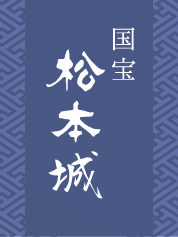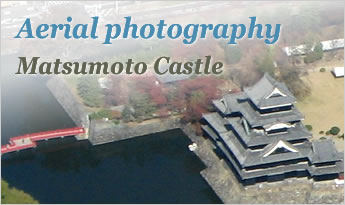Kuromon, Taiko-mon
Kuromon (Black Gate)
Ichi no Mon (Outer gate)

It is an important entrance to enter the Keep.
Once this gate lead to the Honmaru Palace. It has been believed that this gate was called "Kuromon (Black Gate)", as black was regarded as the best color at the time, representing the magnificent formal gate leading to the Honmaru Palace.
On the roof of the gate, you can see the eaves round tiles carrying family crests of successive lords of the castle. This is because, during the Keep Demolition and Repair Project that took place between 1950 and 1955, well-conditioned roof tiles were taken down and kept. And in the Kuromon Restoration Project in 1960, such preserved roof tiles were reused. So, eaves roof titles featuring a various family crests are seen here.
It has been said that the commissioned designer Ichikawa Kiyoyasu used the gate of the Watari Yagura (Roofed Passage) of the Nagoya Castle for reference because there was no remaining blueprint of the Black Gate.

Ninomon (Inner Gate) and Walled compound
The inner gate is located after crossing the inner moat, and taken the shape of Korai-mon style. In November 1989, the inner gate and the buttresses connecting thereof were built so that the walled compound between the two gates was restored. On this buttresses, small windows are installed, so that matchlocks can be fired through the windows at the enemies on the opposite shore.
Taiko-mon (Drum Gate)

Taiko-mon is the outer gate with walled compound. During the Edo period, it had been used as a warehouse. It was taken down in the early Meiji Period. In 1991, an research excavation, and subsequently, in 1992, the restoration of the stone fence were completed. In 1999, the Taiko-mon (Drum Gate) was restored by scraping the pillars into the size that match the shape of the foundation stone. For the pillars, 400 years old Japanese cypress, and for the beam, 140 years old pine are used.
Construction period of the Drum Gate is not clear, but it has been believed that the gate had completed by the Ishikawa clan's era. Gilt ceiling tiles were unearthed from the west of the gate foundation, south stone fence, which have been exhibited in the City Museum.
Stone dropping windows are placed on the floor, on the west side of the gate. In those days, the gate was usually open at 6:00 AM and closed at 6:00 PM.
Taiko ro (Drum Tower)

There was a tower called Drum Tower on the north of the Drum Gate. The tower is equipped with a bell and a drum, functioning to convey information to the vassals, including the time. The gate was called Drum Gate named after the Drum Tower.
Genba stone

Genba stone is porphyrite and the largest stone in the Matsumoto Castle, weighing about 22.5 tons. It is believed that it was carried from Okada or Yamabe province, east of Matsumoto city. This giant boulder was brought into the castle by the order of Ishikawa Genba Mori Yasunaga, founder of the Matsumoto Castle. There is a legend depicting hardship of transporting the boulder. In honor of the name of Lord Yasunaga, it is called Genba stone.












